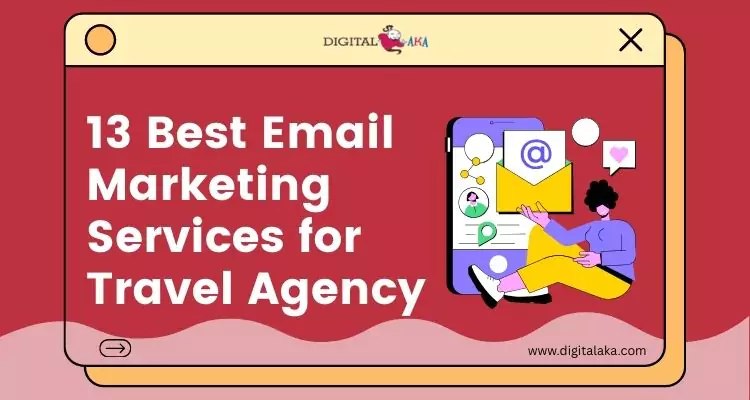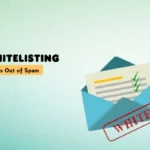
Email Whitelisting- How to Keep Emails Out of Spam
February 12, 2025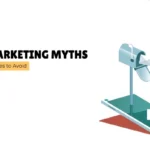
Email Marketing Myths- The Biggest Mistakes to Avoid
February 17, 2025If you are learning about digital marketing, website analytics, or email marketing, you have probably heard the term Bounce Rate many times. But what does it mean? Why is it important? And most importantly, how can you make it better?
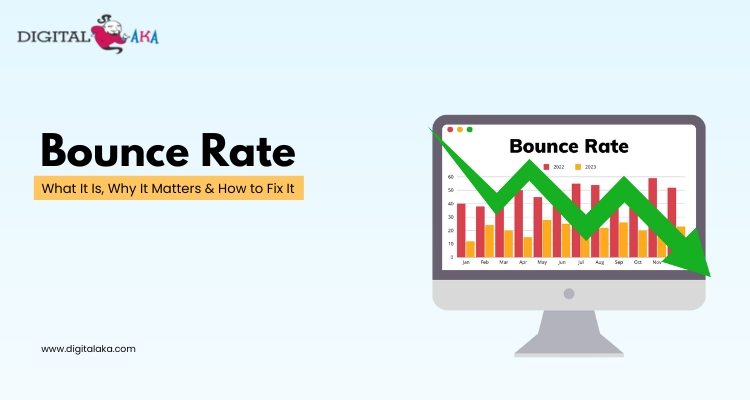
In this simple guide, we will explain Bounce Rate in a way that is easy to understand. We will also share useful tips for reducing bounce rate and improving your website or email marketing results.
Table of Contents
What Are Bounce Rates?
Bounce Rate is the percentage of visitors who leave your website without taking any action—like clicking a link, filling out a form, or visiting another page. In email marketing, Bounce Rate refers to the number of emails that were not delivered to the recipient’s inbox.
Imagine this:
- If 100 people visit your website and 50 leave without doing anything, your Bounce Rate is 50%.
- If you send 1,000 emails and 100 of them bounce back (not delivered), your Bounce Rate is 10%.
A high Bounce Rate can be a problem because it means people are not engaging with your content.
Pricing
| Trail Plan | Standard Plan | Premium Plan | Professional Plan |
| $50 | $145 | $185 | $225 |
| Sending Limit | Sending Limit | Sending Limit | Sending Limit |
| 1000 Emails/Hour | 1500 Emails/Hour | 3000 Emails/Hour | 5000 Emails/Hour |
Why Do Bounce Rates Matter?
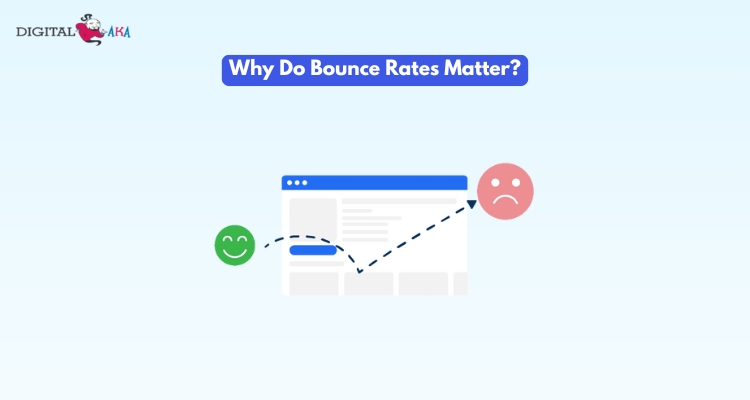
Impact on SEO and User Experience
Bounce rate is important because it affects both SEO (Search Engine Optimization) and User Experience (UX). If many visitors leave your site quickly, it could mean something is wrong.
How Bounce Rate Impacts Your Website
SEO (Search Engine Optimization)
- Search engines like Google look at bounce rates to judge if your content is useful.
- A high bounce rate can hurt your rankings because it signals that users aren’t finding what they need.
User Experience (UX)
- A high bounce rate may mean
- Your content is not relevant.
- Your website loads too slowly.
- The design or navigation is confusing.
- A low bounce rate means visitors are staying longer, engaging with your content, and finding value.
Why Reducing Bounce Rate is Good
- Better Engagement – Users spend more time on your site.
- Higher Conversions – More people take action (buy, sign up, etc.).
- Improved Search Rankings – Google sees your site as helpful and ranks it higher.
Average Bounce Rate: What’s Considered Good?
The average bounce rate varies by industry and content type. Here’s a general benchmark:
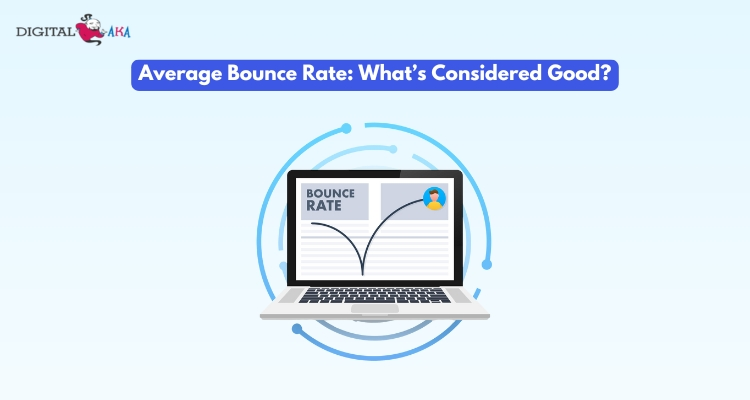
- Blogs & News Websites: 60-80%
- People often read an article and leave.
- Engaging content and internal links can help reduce it.
- Retail Websites (Online Stores): 20-40%
- A lower bounce rate is good because visitors browse products.
- Clear navigation and good product descriptions can keep users exploring.
- B2B Websites (Business-to-Business): 25-55%
- Businesses research before making decisions.
- Detailed information and a strong call to action can improve engagement.
- Landing Pages (One-Page Marketing Pages): 70-90%
- Many visitors leave after reading the main message.
- A clear, relevant offer and easy navigation can help keep them engaged.
What to Do If Your Bounce Rate Is Too High?
- Check if your page loads slowly – visitors don’t like waiting.
- Make sure your website is easy to navigate.
- Add internal links to guide visitors to more pages.
- Ensure your content is engaging and valuable.
- Improve your call-to-action (CTA) so visitors take the next step.
Understanding Bounce Rate in GA4 (Google Analytics 4)
Google Analytics 4 (GA4) has changed how it measures bounce rate. In the latest update, GA4 looks at more than just users who leave quickly. It now considers engagement time and interactions, making the data more useful.
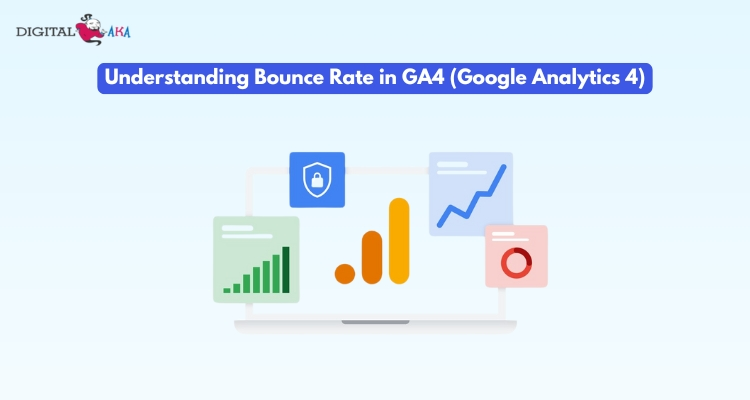
Key Changes in GA4 Bounce Rate:
- Engagement-Based Tracking: GA4 measures how long users stay and what they do, not just if they leave.
- More Accurate Insights: Instead of only tracking users who “bounce” (leave immediately), GA4 looks at how users interact with the page.
- Bounce Rate Checker: You can use this tool in GA4 to understand how users engage with different pages on your website.
Different Types of Bounce Rates
The bounce rate tells us how many people leave without taking further action. There are different types of bounce rates, including website and email bounce rates.
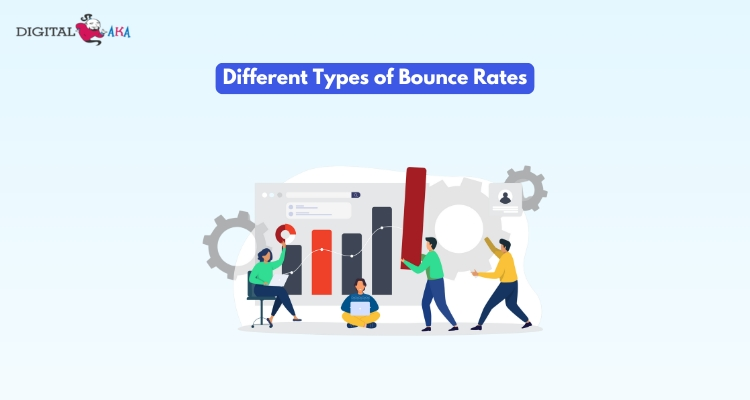
1. Website Bounce Rate
- This shows the percentage of visitors who land on a page and leave without visiting other pages.
- A high website bounce rate can mean:
- The content is not interesting or useful.
- The website takes too long to load.
- The page design is confusing.
- The visitors found what they needed quickly.
- A lower bounce rate is usually better because it means visitors are exploring more pages.
2. Email Bounce Rate
- This tells us how many emails did not reach the recipient’s inbox.
- A high email bounce rate can reduce the sender’s reputation and affect future email marketing services.
There are two types of email bounces:
1. Soft Bounce (Temporary Issue)
- The email could not be delivered at that moment but might be delivered later.
- Reasons for soft bounces:
- The recipient’s inbox is full.
- The email server is down.
- The email is too large.
2. Hard Bounce (Permanent Issue)
- The email will never be delivered.
- Reasons for hard bounces:
- The email address is incorrect or does not exist.
- The recipient’s domain is not active.
- The email server blocks the sender.
To reduce bounce rates, businesses should improve website design, check email lists, and use trusted email services.
Common Reasons for High Bounce Rate
Below are some of the most common causes:
1. Slow Website Speed
- People don’t like waiting for pages to load.
- If a website takes too long, they leave and look for faster options.
- Slow speed can be caused by large images, too many ads, or poor hosting.
2. Poor User Experience (UX)
- If visitors find it hard to use your website, they leave.
- Complicated menus, small fonts, or too many pop-ups make browsing frustrating.
- A clean, simple email design helps people stay longer.
3. Irrelevant Content
- If people click on your page expecting one thing but find something else, they leave.
- Misleading titles or keywords can cause this.
- Make sure your content matches what visitors are looking for.
4. Lack of Clear Call-to-Action (CTA)
- A CTA tells visitors what to do next, like “Buy Now” or “Read More.”
- If there’s no direction, visitors may not know what to do and just leave.
- Every page should have a clear next step.
5. Technical Errors
- Broken links, missing pages, or incorrect redirects can frustrate users.
- If people land on an error page, they won’t stay.
- Regularly check for errors to ensure a smooth experience.
How to Reduce Bounce Rate Effectively
A high bounce rates means that visitors leave your website quickly without exploring more pages. This can be bad for SEO and conversions. Here are some simple ways to reduce and keep visitors engaged.
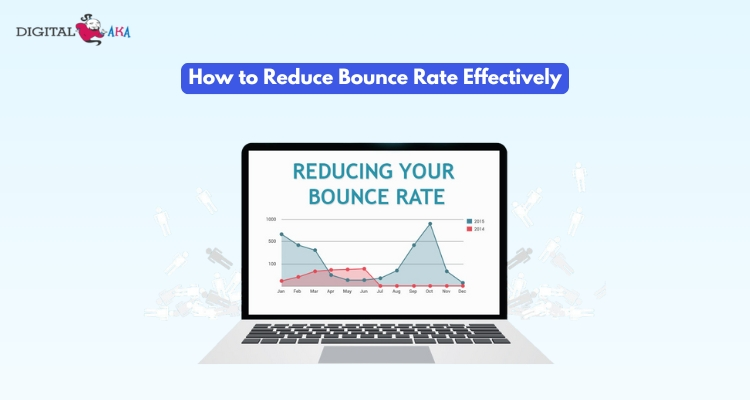
1. Improve Page Load Speed
- A slow website makes visitors leave quickly.
- Even a one-second delay can increase it.
- Use tools like Google PageSpeed Insights to check speed.
- Optimize images so they load faster.
- Enable caching to store data and reduce loading time.
- Minimize unnecessary CSS and JavaScript files.
2. Enhance Mobile Optimization
- More than half of internet users browse on mobile devices.
- A website that is not mobile-friendly will make visitors leave.
- Use a responsive design that adapts to different screens.
- Make sure the text is easy to read on small screens.
- Ensure buttons and links are easy to tap.
3. Craft Engaging Content
- Visitors stay longer if the content is interesting and helpful.
- Content should match what users are searching for.
- Address users’ problems and needs.
- Write in short paragraphs for better readability.
- Use bullet points, headings, and images to make the text easier to skim.
4. Use Strong Internal Linking
- Internal links help visitors explore more pages.
- Add links to related content within blog posts and pages.
- This improves user experience and keeps visitors engaged.
- Internal links also help with SEO rankings.
5. Optimize Call-to-Action (CTA) Placement
- A clear CTA tells visitors what to do next.
- Examples: “Learn More,” “Subscribe Now,” and “Get Started”.
- Place CTAs where they are easy to see.
- Use contrasting colors to make them stand out.
- Avoid too many CTAs on one page, as this can confuse users.
6. Reduce Email Bounce Rate
- If you send emails, you also need to reduce email bounces.
- A high email bounce rates means your emails are not reaching recipients.
- Ways to fix this:
- Clean your email list regularly and remove inactive emails.
- Use a double opt-in method so users confirm their email before subscribing.
- Authenticate emails using SPF, DKIM, and DMARC to avoid spam filters.
7. Utilize Analytics to Track Performance
- Use tools like Google Analytics
- Analyze which pages have high bounce rates.
- Identify the problem and make improvements.
- Track changes over time to see if they are working.
Conclusion
Understanding Bounce Rates is essential for improving website engagement and marketing effectiveness. Whether you’re analyzing GA4, tackling, or optimizing your email bounce rates, the key is to focus on user experience and relevance. Implementing the right strategies will help you reduce it, improve engagement, and drive better conversions.
By using tools like bounce rate checker, optimizing your website, and refining content, you can effectively keep visitors engaged, ensuring your site’s long-term success.


